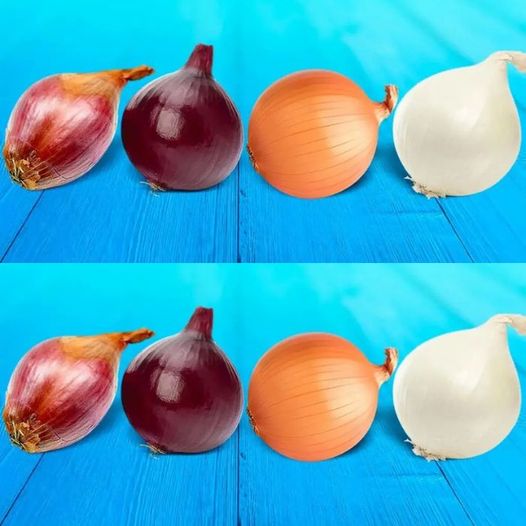ADVERTISEMENT
2. Red Onions: Bold and Colorful
Red onions, with their vibrant purple-red skin and white flesh tinged with red, offer a milder and slightly sweeter flavor compared to yellow onions. They are often used in raw preparations, where their color and milder taste can shine. Their sharp, crisp texture makes them perfect for salads, salsas, and as a topping for burgers or sandwiches.
- Flavor Profile: Red onions have a milder, sweeter taste when raw but can become sharper and more pungent when cooked.
- Best Uses: They’re perfect for fresh dishes like salads, salsas, and guacamole. Their color makes them a beautiful garnish for sandwiches, tacos, and burgers. When cooked, they become a bit sweeter and softer but are still not as mellow as yellow onions.
- Storage: Red onions should also be stored in a cool, dry place. Due to their high water content, they may not last as long as yellow onions, but they typically stay fresh for up to a few weeks.
3. White Onions: Crisp and Mild
White onions are slightly more delicate than yellow onions, with a thinner skin and a crisp texture. They have a sharper, more pungent flavor when raw but become milder and sweeter when cooked. White onions are often preferred in recipes where a clean, crisp onion flavor is desired without the strong aftertaste that yellow onions can sometimes impart.
- Flavor Profile: White onions have a milder, more subtle flavor compared to yellow onions and are usually less sweet.
- Best Uses: They are commonly used in Mexican and Mediterranean cuisines, especially for salsas, tacos, and guacamole. They are also excellent in stir-fries, fresh salads, and salsas, where their sharpness and freshness can add a punch.
- Storage: Like red onions, white onions should be stored in a cool, dry place. They tend to spoil faster than yellow onions, so it’s best to use them within a few weeks.
Which Onion Should You Use?
The best onion to use in a recipe depends on the dish you’re preparing and the flavor profile you want to achieve. Here are some general guidelines:
- Yellow Onions: Perfect for long-cooking dishes where a deep, caramelized flavor is desired, such as in soups, stews, and casseroles.
- Red Onions: Ideal for raw applications, where their color and milder flavor can stand out, such as in salads, salsas, and as a topping for sandwiches and burgers.
- White Onions: Great for dishes that need a sharp, crisp onion flavor, especially in fresh preparations like salsas, tacos, and Mediterranean dishes.
Can You Substitute One Onion for Another?
While each onion has its own distinct flavor, you can usually substitute one for another depending on the dish. Here are a few tips:
- Yellow to White Onion: If you need a milder, less sweet onion, white onions can be a good substitute for yellow onions, especially in raw applications like salads or salsas.
- Yellow to Red Onion: Red onions can be substituted for yellow onions in cooked dishes if you’re okay with a slightly sharper, more colorful result. However, be aware that red onions won’t caramelize as deeply as yellow onions.
- Red to White Onion: In dishes where you want a sweeter, more mild flavor, white onions can replace red onions, but the color and sharpness will differ.
Health Benefits of Onions
In addition to their distinct flavors, onions—regardless of the variety—are packed with health benefits. They are rich in antioxidants, vitamins (like Vitamin C and B vitamins), and minerals (such as potassium). They also contain compounds that have anti-inflammatory properties and may support heart health, digestion, and even cancer prevention.
- Red Onions: Contain anthocyanins, which are antioxidants responsible for their vibrant color and can support cardiovascular health.
- Yellow and White Onions: Rich in quercetin, a powerful antioxidant that has anti-inflammatory properties and may help fight infections.
Conclusion: The Onion Debate
Next time you’re in the kitchen, you’ll have a better understanding of which onion to choose based on your recipe’s needs. Whether you’re using yellow onions for their sweet caramelized flavor, red onions for their milder taste and beautiful color, or white onions for a crisp, sharp bite, each variety has something special to offer. By understanding the differences between red, white, and yellow onions, you can bring even more flavor and creativity to your cooking.
So, the next time you reach for an onion, take a moment to consider which type is right for the dish you’re preparing. You’ll elevate your meals and enjoy the rich diversity that onions bring to the table!
